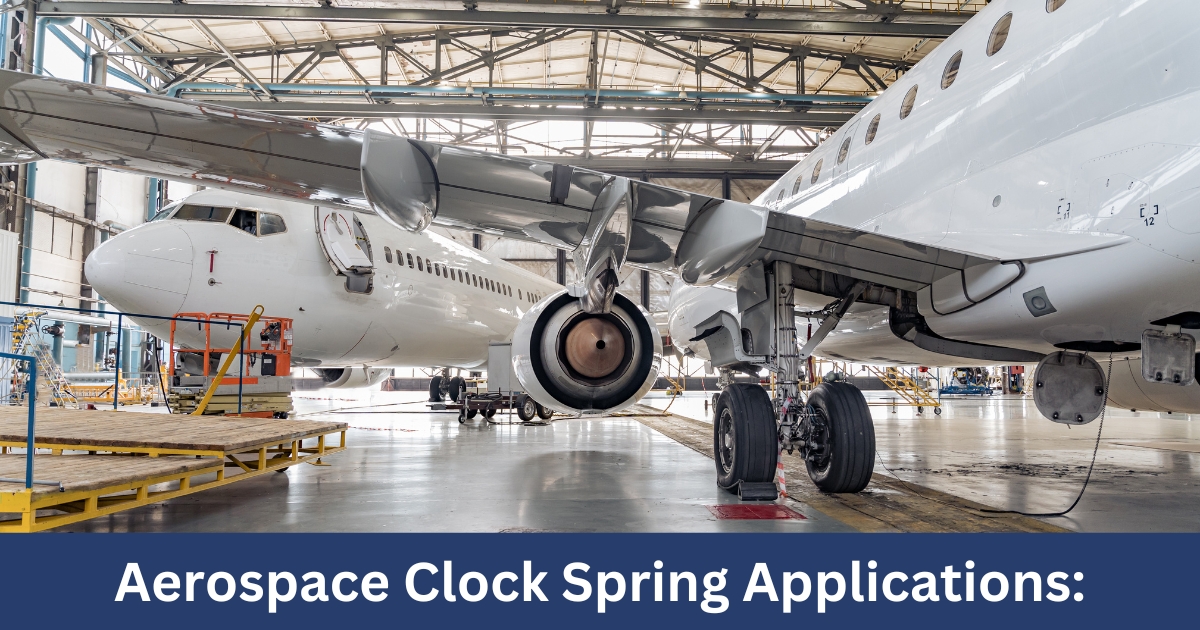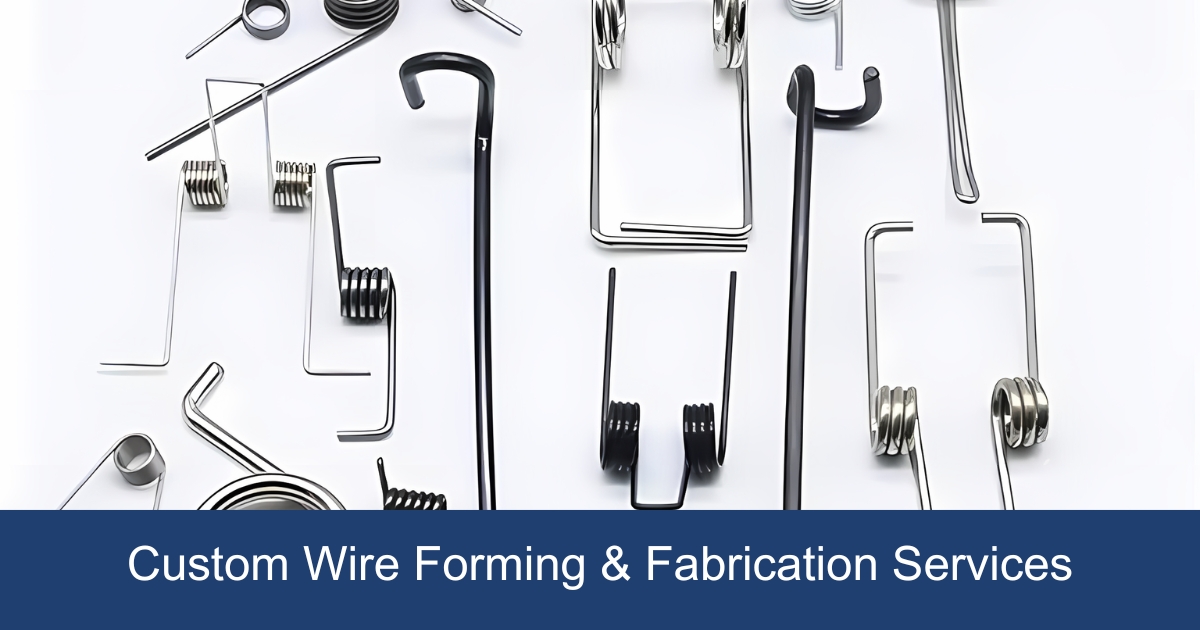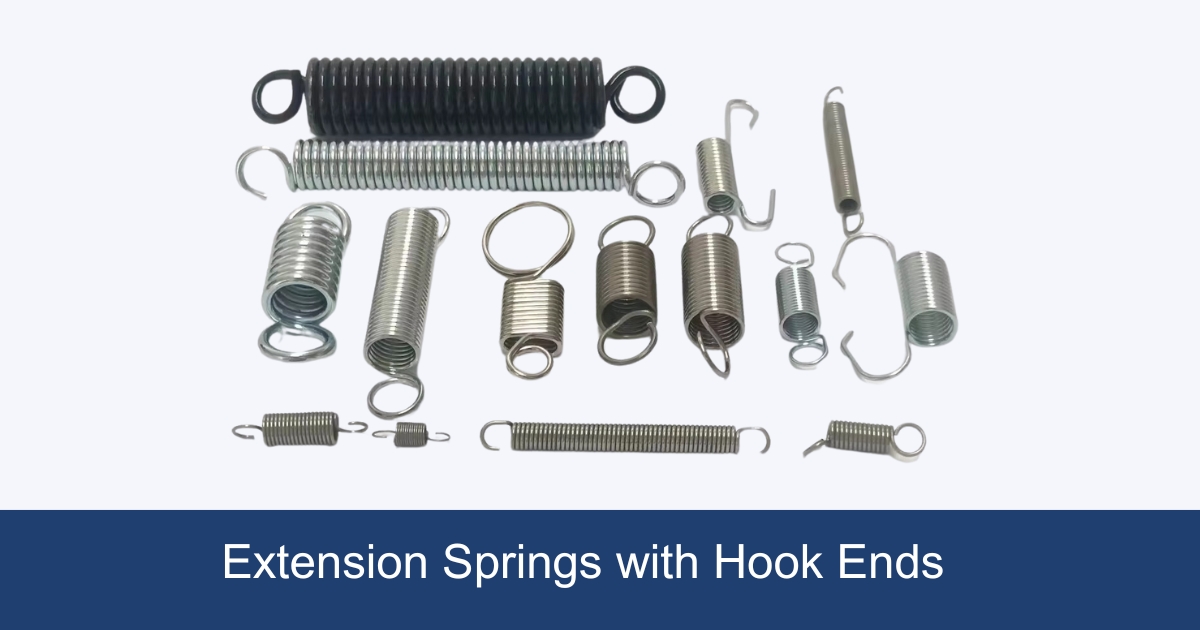This article will explore the intricacies of tapered springs, including their operational principles, lifespan, types, and design considerations, offering insights into selecting the right tapered spring for specific applications.

What is a Taper Spring?
A taper spring, often referred to as a conical or tapered compression spring, is a type of coil spring that narrows towards one end, resembling a cone in shape. Unlike traditional cylindrical springs, the unique geometry of taper springs allows them to compress to a nearly flat state without the risk of buckling, providing a stable, progressive compression rate. This characteristic makes taper springs highly suitable for applications with limited space that require a large amount of deflection.
How do tapered springs work?
Tapered springs work by progressively compressing from the wider base towards the narrower end when a force is applied. This unique design allows for a variable spring rate; as the spring compresses and coils with larger diameters become inactive, the effective spring rate increases. This results in a soft initial compression that becomes progressively harder, providing stability and preventing buckling even in compressed states. The ability to compress to a near-flat state without losing functionality makes tapered springs ideal for applications with limited space but requiring significant deflection and a variable force response throughout the compression cycle.
How Long Do Taper Spring Last?
The longevity of tapered springs can significantly vary depending on several factors, including the material used, the environment in which they operate, and the level of stress they are subjected to. Understanding these factors can help in estimating the lifespan of a tapered spring and ensuring its optimal performance throughout its service life.
- Material Used: The choice of material plays a crucial role in the durability of tapered springs. For instance, springs made from music wire, known for its high tensile strength, can withstand greater stress and thus, tend to last longer compared to those made from materials with lower tensile strength .
- Operating Environment: The environment in which a tapered spring functions can also affect its lifespan. Springs operating in corrosive environments or subjected to extreme temperatures are likely to experience a reduction in their service life. Protective finishes, such as stainless steel or phosphor bronze coatings, can offer resistance against such adverse conditions, thereby extending the spring’s lifespan.
- Stress Levels: The amount of load and the frequency of cycles a spring undergoes directly influence its longevity. Springs designed to handle high loads with minimal deflection are less prone to wear and fatigue, contributing to a longer operational life. Conversely, springs subjected to continuous high-stress conditions may experience quicker degradation.
By considering these factors, one can make informed decisions regarding the selection and maintenance of tapered springs, ensuring their reliability and efficiency in various applications.
Types of Tapered Springs
In exploring the landscape of tapered springs, it’s imperative to understand the diversity in types and configurations available, each tailored to meet specific operational demands across various industries. The categorization and characteristics of these springs are as follows:
Barrel Springs:
Application: Predominantly utilized in antenna systems, these springs find their niche in a wide array of sectors including general industrial applications, aerospace, automotive, and medical fields. Their unique design facilitates applications where space is a constraint and where there is a need for springs that can compress to a shorter height without losing their load-bearing capacity.
Design Variants: Available in both left and right wind configurations, they can be customized to fit the specific requirements of the application. This adaptability extends to their end configurations, which can be closed & squared, closed & ground, or left open, providing a range of interaction points with the application environment.
Constant Rate Tapered Springs:
Functionality: Characterized by their ability to maintain a consistent compression rate throughout their operational range, these springs are crucial in applications requiring precise control over movement or load. This consistent rate ensures predictable performance, making them ideal for use in mechanisms where reliability is paramount .
Customization: The ability to tailor these springs to specific needs is a significant advantage. This includes variations in size, finish options, and even the material used, allowing for a perfect match to the application requirements. The customization extends to the springs’ end types, which can include open ends, closed ends, close and ground ends, and double closed ends, further enhancing their adaptability to a wide range of uses.
Design consideration and Specification of Tapered Springs
When designing and specifying tapered springs, several critical dimensions and characteristics must be considered to ensure the spring meets the application requirements effectively. These considerations include:
- Larger Outer Diameter: The measurement across the spring’s largest end.
- Smaller Outer Diameter: The measurement across the spring’s smallest end.
- Inner Diameter: Taken from the width of the inside of the smallest coil.
- Wire Diameter: Thickness of the spring wire.
- Total Coils: Number of complete circles in the spring.
- Solid Height: The length of the spring when fully compressed.
- Free Length: The overall length of the spring in its uncompressed state.
- Spring Rate (Spring Constant): Measures the force required to compress the spring by a specified quantity, critical for estimating the spring’s behavior under load
- Load Capacity: The maximum force or weight the spring can support without irreversible distortion or breakdown.
- Stress Analysis: Evaluation of the stresses and strains within the spring during operation. The mean diameter of the largest active coil is used to calculate the highest stress at a given load or deflection.
- Minimum Tensile Strength (MTS): Values vary with the spring-wire diameter, with 30 to 45 percent of the MTS value used as a corrected stress target for a long fatigue life.
These design considerations and specifications play a pivotal role in the successful integration and performance of tapered springs in various applications, ensuring they meet the desired requirements while maintaining durability and efficiency.
Materials Used in Taper Springs
The selection of materials for tapered springs is critical, as it directly influences their performance, durability, and suitability for specific environments. Common materials include:
- Music Wire: Known for its high tensile strength and excellent fatigue life, making it ideal for high-stress applications.
- Stainless Steel: Offers excellent corrosion resistance, which is crucial for springs used in corrosive environments or where rust could be a concern.
- Chrome Silicon: Preferred for its superior strength at elevated temperatures, making it suitable for high-performance applications.
To further enhance the functionality and longevity of tapered springs, various finishes are applied:
- Rust-resistant finishes: Such as stainless steel or phosphor bronze coatings, provide additional protection against corrosion.
- Decorative finishes: Including brass, chrome, black powder, and brushed nickel, not only improve the appearance but may also offer some level of corrosion resistance.
Moreover, the choice of material and finish must consider the application’s environmental conditions. For example, springs destined for high-temperature applications may require materials like chrome silicon for their ability to maintain strength at elevated temperatures. Similarly, the finish selected can play a vital role in protecting the spring from environmental factors such as moisture, which could lead to corrosion. It’s evident that the material type should be chosen based on the environment the spring will operate in, considering factors like temperature and moisture levels, to prevent premature failure or unnecessary costs
Advantages of Taper Springs
Tapered springs, known for their unique conical shape, offer a range of advantages that make them indispensable in various applications. These advantages stem from their design, material versatility, and functional characteristics. Here’s a breakdown of the key benefits:
- Reduced Solid Height: The ability to telescope into a smaller solid height when compressed allows for more efficient use of space. This feature is particularly beneficial in applications where space is at a premium, enabling higher loads within limited areas.
- Greater Stability and Improved Stability: With the larger outer diameter typically positioned at the bottom, tapered springs provide enhanced stability and a reduced tendency to buckle compared to regular compression springs. This characteristic ensures greater lateral stability, making them a reliable choice for applications requiring robust performance.
- Variable Rate: They offer a non-linear compression rate, which means the force required to compress the spring varies. Smaller diameters exert more force, while larger diameters provide less, allowing for a more controlled and gradual response to load.
- Space Efficiency: Thanks to their tapered structure, these springs can handle higher loads in confined spaces better than traditional straight springs. This makes them ideal for compact designs where maximizing space and functionality is crucial.
- Damping Characteristics: Offering improved damping characteristics due to their progressive rate, tapered springs are suitable for applications that require controlled movement or vibration attenuation, providing a smoother operational performance.
Conclusion
Through the exploration of tapered springs, from their design and operational principles to their materials and selection criteria, we have unraveled the intricate layers that make these components vital in a myriad of applications. The insight into their non-linear compression rates, ability to manage high loads in confined spaces, and the unique advantages they offer, such as reduced solid height and enhanced stability, highlight the critical role tapered springs play in ensuring the efficient functioning of mechanical systems. Their adaptability across various industries further underscores the significance of making an informed choice tailored to specific application requirements.
FAQs
What Exactly is a Tapered Spring?
A tapered spring, also known as a conical spring, is characterized by its unique shape where the coils gradually reduce in size from one end to the other, forming a cone-like structure. This design allows the spring to function effectively by utilizing its tapered form.
How are Conical Springs Utilized?
Conical springs are versatile and find applications in various fields. They are commonly used in electrical components like push buttons and battery contacts due to their reliable performance. Additionally, they play a crucial role in the suspension systems of automobiles, enhancing vehicle stability and handling. In the firearms industry, these springs are integral to the firing mechanisms, contributing to the safety and functionality of the weapon.
Can You Explain How Spring Mechanisms Operate?
Spring mechanisms operate on a simple principle of energy storage and release. Compression springs, for instance, absorb energy when a compressive force is applied, causing them to compress. This energy is stored within the spring’s structure. Upon removal of the force, the stored energy is released, allowing the spring to expand back to its original length.
What are the Primary Types of Springs?
Springs can be broadly categorized into three main types based on their design and the load they are intended to bear:
- Compression Springs: These springs are designed to withstand compressive loads, storing energy as they are compressed.
- Extension Springs: Tailored to endure tensile loads, extension springs operate by stretching and storing energy in the process.
- Torsion Springs: These springs are made to handle torque or twisting forces, twisting as they absorb and release energy.



